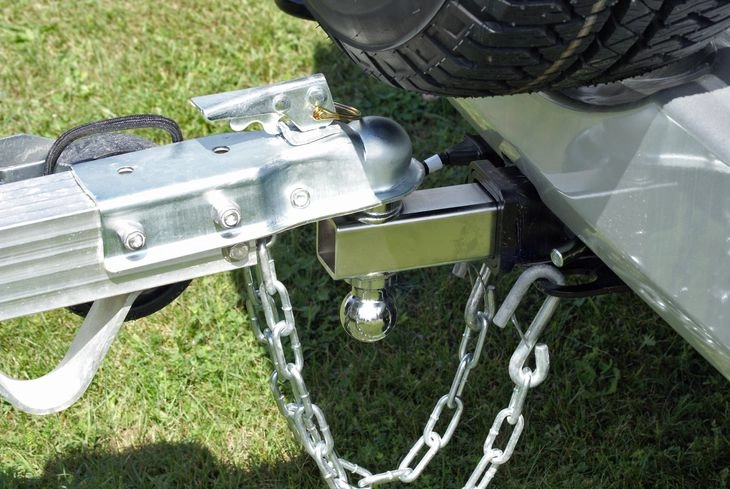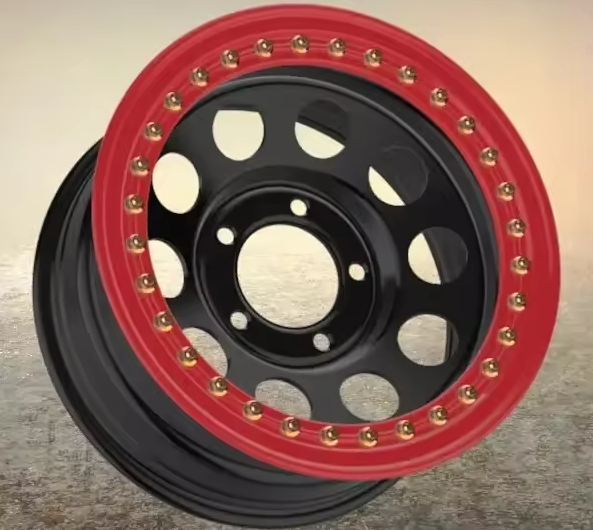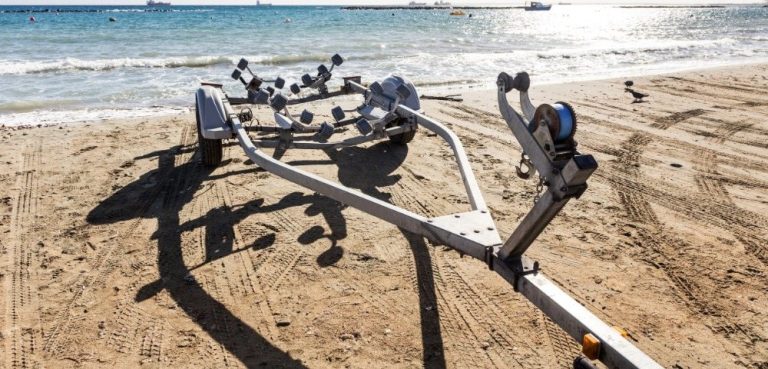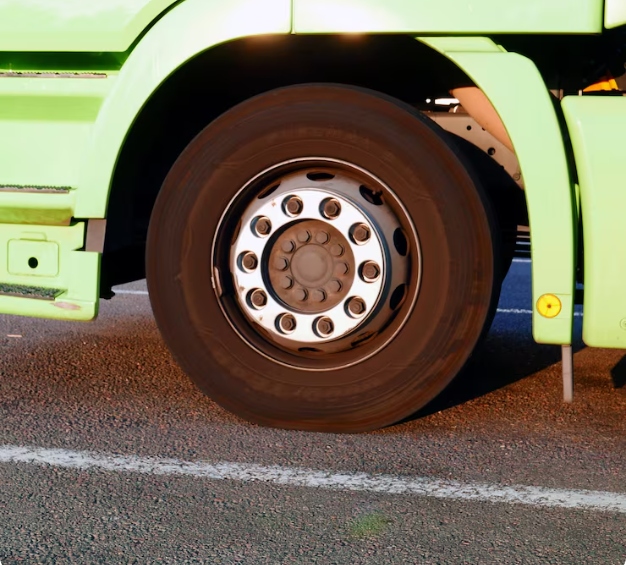Keeping your trailer in great shape is super important for safe towing. Whether you’re hauling tools, animals, or fun stuff like ATVs, you need to check one key part: the trailer coupler. This piece links your trailer to your truck or car. If it’s worn out, it can cause big problems, like coming loose while driving.
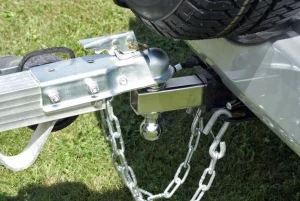
In this post, we’ll show you how to spot signs of a bad coupler and walk you through the steps for trailer coupler replacement. By fixing issues early, you can stay safe and keep your trailer working well.
Why Trailer Couplers Are a Big Deal
The trailer coupler is like the glue between your trailer and your vehicle. It holds them together tightly. If it’s not working right, you could face unsafe situations or damage your trailer. Knowing the signs of a bad coupler and learning how to change a coupler can save you headaches and cash. Checking it often and swapping it out when needed keeps your trailer ready for the road.
Spotting Signs of a Bad Trailer Coupler
Before you jump into trailer coupler replacement, you need to know when it’s time to fix it. A worn-out coupler shows clear clues. If you ignore them, small issues can turn into big dangers. Here are the main signs of a bad coupler to look for when you check your trailer.
Cracks or Rust You Can See
Take a close look at the coupler for damage you can spot with your eyes:
- Cracks or Breaks: Check for tiny or big cracks, especially near the part that holds the hitch ball. Even small ones can make the coupler weak.
- Rust or Wear: A little rust on top is no biggie, but deep rust can hurt the metal’s strength. Look for rough or flaky spots.
- Bent Shape: If the coupler looks twisted or out of shape, it might not hold the hitch ball right. This can make it slip off.
Trouble Hooking Up or Unhooking
If attaching or detaching your trailer feels weird, the coupler might be failing:
- Wobbly Connection: A worn-out coupler may not grip the hitch ball well. It could shake or rattle when you drive.
- Sticky Latch: If the latch or lock is tough to move, the parts inside might be worn or broken.
- Too Much Wiggle: If the coupler moves around too much on the hitch ball, it’s a sign it’s not safe anymore.
Strange Noises or Wobbling
Listen and feel how your trailer acts when you tow it:
- Loud Bangs: If you hear clunking or thumping when you start, stop, or turn, the coupler might be loose or damaged.
- Shaky Trailer: Does the trailer sway or feel unsteady? The coupler might not be holding it tight enough.
How Often to Check Your Coupler
To catch problems early, inspect your trailer coupler regularly. Here’s a handy table to guide you:
| Check Type | How Often | What to Look For |
| Before Trips | Every time you tow | Cracks, secure latch, smooth movement |
| Regular Look | Monthly or every 1,000 miles | Rust, wear, latch function |
| Deep Check | Once a year or after hard use | Inside parts, bolts, frame strength |
Checking often stops little problems from becoming huge risks.
How to Do a Trailer Coupler Replacement
If you’ve found a bad coupler, it’s time to swap it out. Learning how to change a coupler isn’t too hard if you have the right tools and follow clear steps. Here’s a simple guide to get it done safely.
Stuff You’ll Need
Get these things ready before you begin:
- New trailermake sure it fits your trailer’s weight and hitch size)
- Socket wrench set
- Torque wrench (to tighten bolts just right)
- Screwdrivers (one flat, one with a star tip)
- Pliers
- Safety gloves and safety glasses
- Jack and jack stands
- Grease (to make parts slide smoothly)
- Cleaning stuff (wire brush, cleaner)
- Work gloves
Make sure the new coupler matches your **trailer’s weight and hitch type. Check the trailer’s manual or label for details.
Step-by-Step Guide to Swap It
Here’s how to do trailer coupler replacement step by step:
Get the Trailer Set Up:
- Park on a flat spot.
- Put wheel chocks under the tires to keep it still.
- Lift the trailer’s front with a jack.
- Use jack stands to hold it steady.
- Unhook the trailer from your vehicle.
Take Off the Old Coupler:
- Find the bolts or welds holding the coupler to the trailer frame.
- If it’s bolted, use a socket wrench to undo the bolts. Save them if they look okay.
- If it’s welded, you’ll need a pro welder to cut it off.
Clean the Frame Up:
- Scrub the mounting spot with a wire brush and cleaner.
- Look for rust or damage on the frame.
- Fix any problems before putting on the new coupler.
Put On the New Coupler:
- Set the new coupler on the trailer’s tongue.
- Line it up with the bolt holes.
- Tighten the bolts with a torque wrench to the right tightness (check the manual).
- For welded couplers, get a pro to weld it on strong.
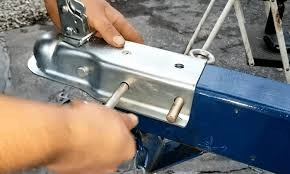
Test It Out:
- Hook the trailer to your vehicle.
- Try the latch to make sure it works smoothly.
- Check that the coupler fits tight on the hitch ball with no wiggle.
- Drive a short test loop slowly to make sure it feels solid.
Finish Up:
- Put grease on the coupler’s moving parts so they work well.
- Double-check all bolts to make sure they’re tight.
Stay Safe While Working
- Wear safety glasses and gloves to stay safe from sharp bits or dust.
- Make sure the trailer won’t tip before you crawl under it.
- Use a torque wrench to tighten bolts just enough. Too tight can break things.
- If any step feels tricky, ask a pro to help so it’s safe.
About Go Trailer: Your Go-To Trailer Parts Maker
When picking a new trailer, you want something tough. Qingdao Go Trailer Parts Company, located in China, is a pro trailer parts maker with more than 15 years in the game. They build awesome parts like trailer couplers, axles, jockey wheels, winches, and springs. Go Trailer uses high-tech tools, like CNC machines and laser cutters, to make strong, reliable stuff. They care about safety, quality, and making customers happy, which makes them a top pick for trailer owners everywhere. Buying straight from Go Trailer means you get great parts at good prices without dealing with middlemen.
FAQs About Trailer Coupler Care
Q1: What are the top signs of a bad trailer coupler?
A: Common signs of a bad coupler are cracks you can see, rust eating into the metal, or a bent shape. You might also notice trouble hooking up, a sticky latch, or loud noises when towing. Check it often to catch these early.
Q2: Why should you fix a worn trailer coupler fast?
A: A bad coupler can slip off your vehicle while driving. This could cause crashes, wreck your trailer, or lose your load. Swapping it out quickly keeps you safe and saves money on bigger fixes.
Q3: When do you need to check your trailer coupler?
A: Look at your coupler before every trip, once a month, or every 1,000 miles. Do a bigger check once a year or after tough jobs to make sure it’s still good.
Q4: How do you pick the right trailer coupler to replace it?
A: Choose a coupler that fits your trailer’s weight, hitch ball size, and mounting type. Look at the trailer’s manual or label to get it right.
Q5: Who can do a trailer coupler replacement?
A: If you’re handy with tools and follow safety steps, you can do it yourself. But for welded couplers or tricky setups, a pro mechanic or welder is the way to go.
Get Your Trailer Rolling Safely
A good trailer coupler is super important for towing without trouble. By spotting signs of a bad coupler and knowing how to change a coupler, you can keep your trailer in awesome shape. Checking it often and fixing it when needed makes your trips safer and your trailer last longer. Don’t let a beat-up coupler mess up your day. Take a few minutes now to check yours and make sure it’s ready. for the road. For strong, trusty parts, look for makers who build quality stuff that fits your trailer. Stay smart, stay safe, and keep towing!


